Cold-brewing delivers joe’s jolt without bitterness
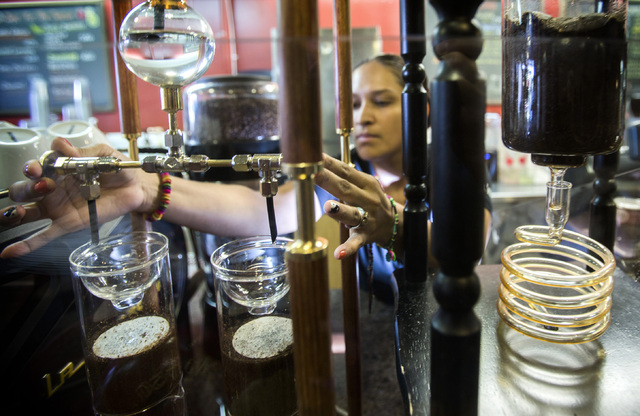
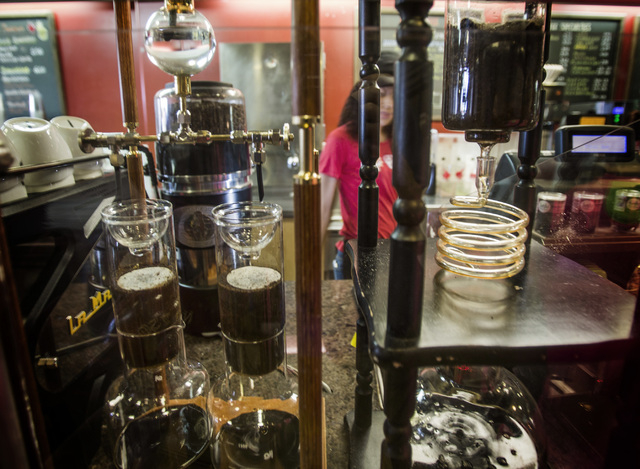
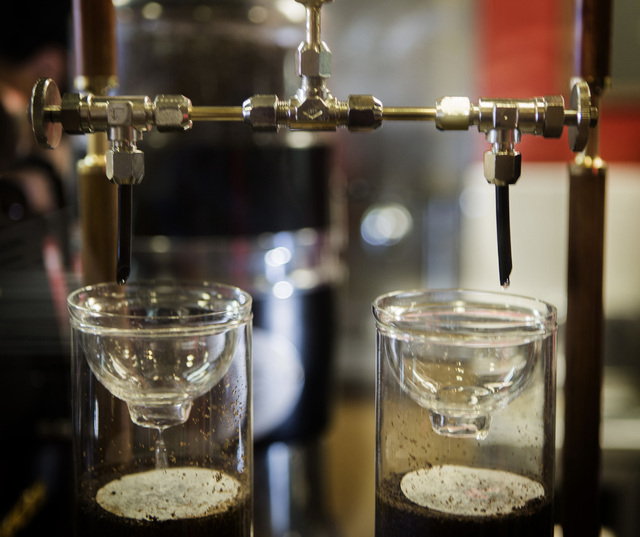
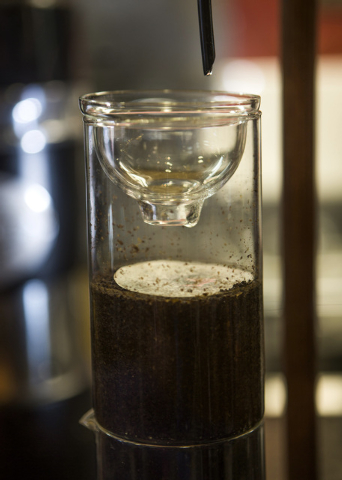

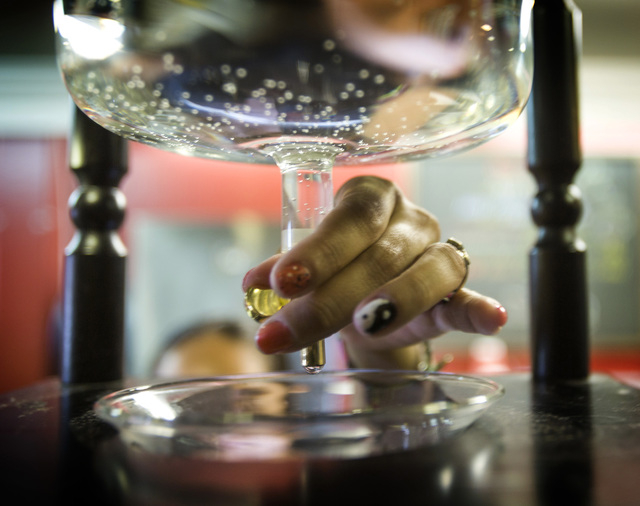


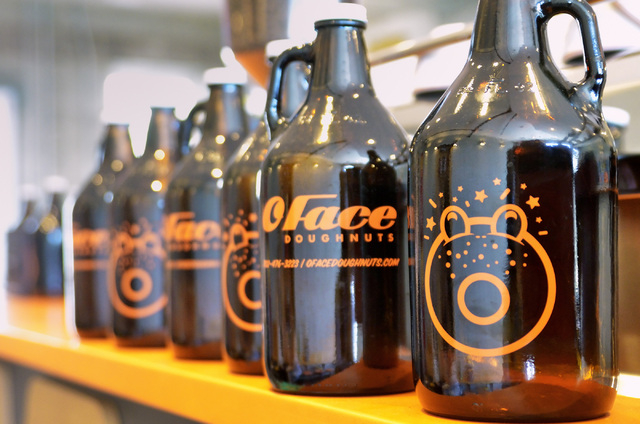



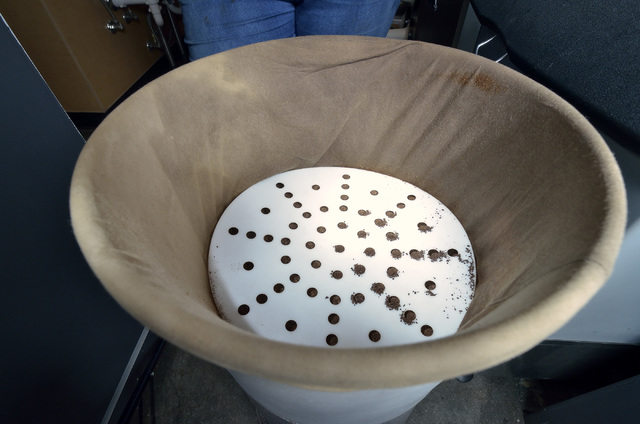


Single-cup or by-the-pot? Drip or percolator? Chemes or Melitta? None of the above, if you’re a proponent of the cold-brew coffee method.
Cold-brew coffee has been around for years but has been gaining popularity lately as cofficionados continue to experiment with new and better methods of producing their favorite drink.
Lisa McManus, a senior editor with Cook’s Illustrated magazine and America’s Test Kitchen, said the staff tested the Toddy, one of the earliest and most popular cold-brew systems, nine or 10 years ago.
“Nobody cared for a really long time,” she said. “Suddenly it’s become much more of a thing. Everybody’s talking about it, and it’s on every coffee site. Starbucks has their bottle of cold-brew concentrate. It’s become very hip right now. Manufacturers have taken note, and there are a whole bunch of cold-brew coffee systems that are coming out.”
The biggest advantage to the cold-brew process, she said, is that it produces coffee that is lower in acid than heat-processed coffees and a little smoother, because while heat releases some of the compounds that give it flavor, it also increase its bitterness and acidity.
“I think the other advantage people like is you can make a bunch of it at once,” McManus said. “You’re not brewing coffee every day. You can drink the cold-brew concentrate reconstituted or pour it over ice and have iced coffee for a couple of weeks without having to fuss. If you want to just make it on a Sunday and have it for the next two weeks in your fridge, that’s great.”
In a nutshell, here is how the process works: Using a cold-brew system, a French press or something you’ve put together from jury-rigged parts, you combine coffee grounds and cold water. The fineness of the grind and the ratio of coffee to water is very much a personal preference.
“People like the DIY aspect,” McManus said. “People mess around with the ratio.”
Then, you pretty much let it steep. For quite some time.
“There’s also debate about the length of time you want to let it steep,” she said. “A little more than overnight, or up to 24 hours is good. Longer than that, you’re really not doing much.”
You filter out the grounds, and that’s pretty much it.
Depending on how concentrated your cold-brew is, either you can serve it directly poured over ice or diluted and poured over ice. Or you can heat it, diluted or not.
“A lot of people think you can only drink it iced,” McManus said. “If it’s the concentrated kind, you can add hot water to it and make hot coffee.”
But most people, she said, are drawn to cold brew because they like iced coffee. If you’re making iced coffee using a conventional system, she pointed out, you first make the coffee, then let it cool, then you put it over ice.
“Now it’s old lukewarm watered-down coffee,” she said. “This stuff is pretty good, and it’s already cold.”
Cold-brewed coffee is available in numerous spots in Las Vegas, and most of them serve it cold.
Sonny Ahuja, owner of O Face Doughnuts in the John E. Carson Building downtown, said he’s been selling it since the shop opened in April, and the response has been “amazing.”
“Granted, it’s hot, but we sell by far more cold coffee than we do any other coffee right now,” Ahuja said.
He said when he was getting ready to open the shop, he wanted to ensure it had a strong coffee program. He went to Seattle for training and to research what was hot. And it turned out to be cold.
“It’s super low-tech,” he said. “You’re not releasing the oils that create this bitterness. You get a really, really clean flavor. You don’t get any grittiness, either.”
O Face steeps its coffee for 15 hours. Ahuja said he always recommends that people who are new to cold-brew coffee taste it first without ice so they can determine the essential flavor.
“You get this touch of sweetness,” he said. “You might get some notes of chocolate, or nuts, or spice. You get all these great nuances of the coffee that you don’t necessarily get with the heated version.
“This is the coolest thing ever, living in the desert and being a coffee drinker.”
His shop sells half-gallon growlers for $36; refills are $24.
“You can put it in your fridge and keep it for a couple of weeks,” he said.
Those who eschew cold brew often complain that the lack of acidity also means some of the brightness of the coffee’s flavor is lacking. But Ahuja said that reaction is rare.
“You’ll get people who like that bitterness,” he said. “A lot of people have come up to me and said they stopped drinking coffee for that reason. Now that they’ve tasted our cold brew, they’ve started drinking coffee again.”
Whole Foods Markets also has been selling cold-brew coffee since April. Theirs is their own coffee — from their Allegro Coffee Co. — and is steeped for about 12 hours and sold chilled and in 32-ounce growlers, which are $6.95, with refills for $5.
“It’s done very well,” said Adrian Sepulveda, regional coffee coordinator for the chain’s Southern Pacific region. “It’s very popular. In some cases, the stores can’t keep it in stock.”
Paul Peterson, beverage director for Bouchon at The Venetian, said the restaurant and Bouchon’s bakeries will start selling cold-brew coffee this week. He said it’s been popular at the original Bouchon in Yountville, Calif., for a couple of years, and that it’s simply better for iced coffee, because it’s not watered down.
And that’s what Luiz Oliveira has found. He has been serving cold-brew coffee for nearly four years at his Sambalatte Torrefazione in Boca Park, which has a cold drip tower, and is using a wine fermenter that holds 27 gallons of water and 30 pounds of ground coffee at his newer locations at the Monte Carlo and at 6555 S. Jones Blvd. The coffee that comes out of the drip tower, he said, is ready to drink after eight hours.
“In the fermenter, after 24 hours the coffee is concentrated,” he said. The concentrate moves to a tank, from which it’s dispensed at a two-to-one ratio of water to coffee.
“It’s becoming more and more popular,” Oliveira said. “As we grow, I’m going to have to get a bigger fermenter, maybe a 99-gallon fermenter. Maybe we’ll bottle and start selling it.”
In the meantime, as you might imagine, there’s another coffee process on the horizon.
“The big revolution — the latest word in this — is the Japanese ice-brew method,” McManus said. “Basically, what you do is use half hot water and half ice. The heat brings out more flavor and more wonderful things in the coffee beans, but then it immediately hits ice and cools down. Supposedly that preserves some of the aroma and some of the flavor right there in the coffee at that moment, and then cools it down. The idea is you’re cooling it very quickly, and it’s not sitting around oxidizing.
“Coffee geeks are now hotly debating these two methods.”
Contact reporter Heidi Knapp Rinella at hrinella@reviewjournal.com or 702-383-0474.












